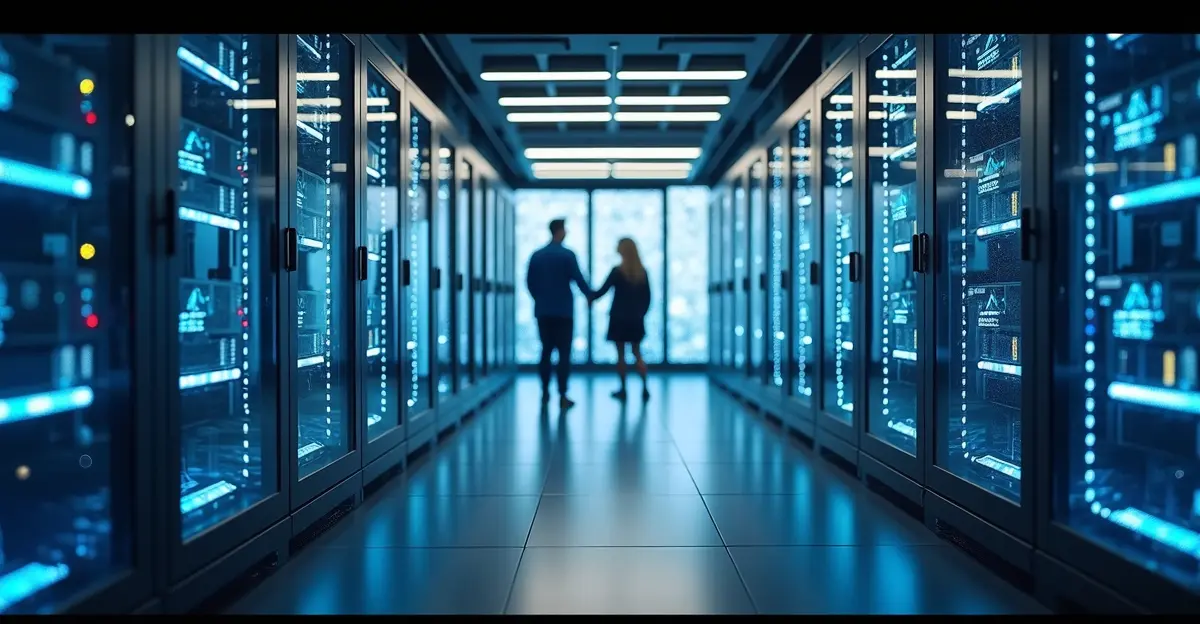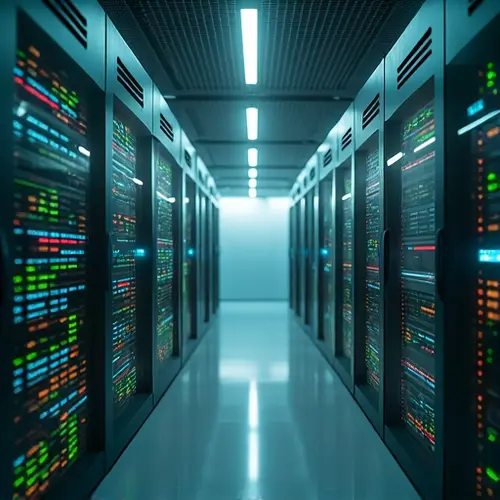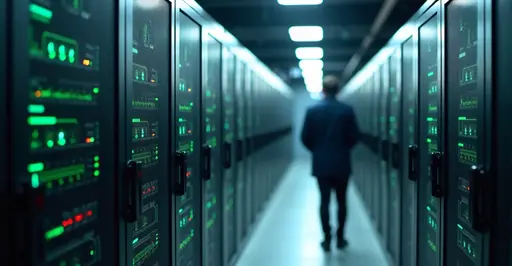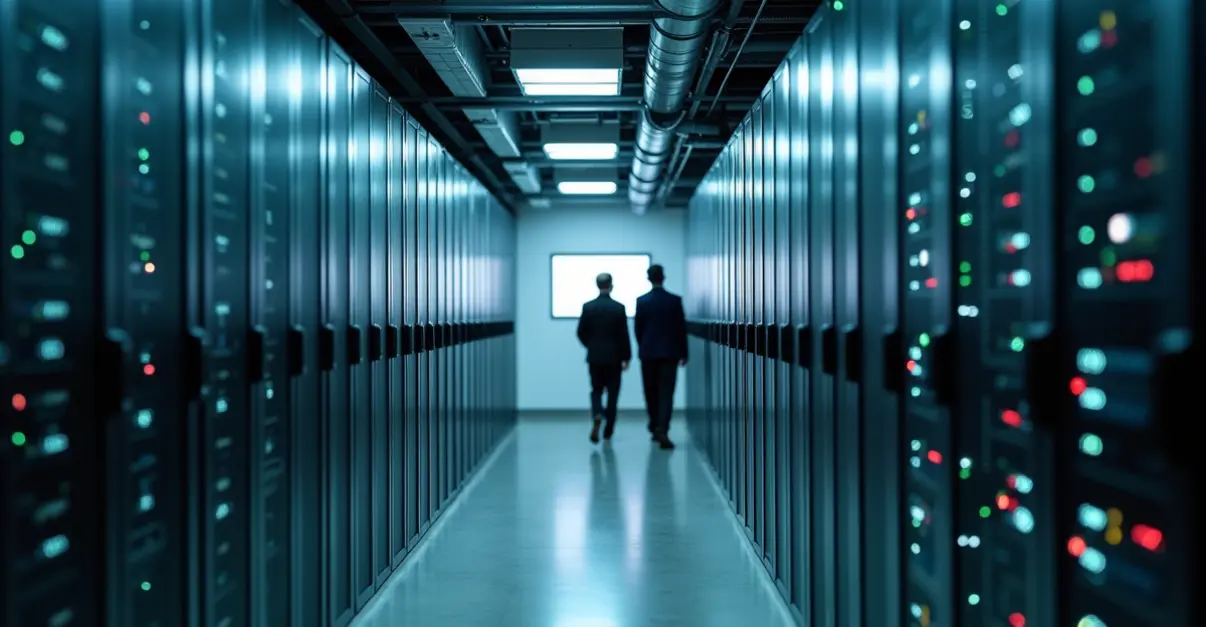Immersion cooling technology is transforming data centers by reducing energy consumption up to 90%, cutting emissions by 21%, and enabling higher rack densities for AI workloads. The $4.87B market is growing at 18% CAGR as major tech companies adopt this sustainable solution.

The Cooling Revolution Transforming Data Centers
As global data centers face unprecedented energy demands from artificial intelligence and high-performance computing workloads, a quiet revolution is underway beneath the surface—literally. Immersion cooling technology, once considered a niche solution for specialized applications, is rapidly becoming mainstream as operators seek sustainable ways to manage soaring power densities and reduce environmental impact.
What is Immersion Cooling?
Immersion cooling involves submerging electronic components directly in non-conductive dielectric fluids that efficiently transfer heat away from hardware. Unlike traditional air cooling that relies on fans and air conditioning, this liquid-based approach creates direct contact between cooling fluid and hot components, enabling significantly more efficient heat dissipation. 'The thermal transfer efficiency of liquids versus air is fundamentally different—liquids can absorb 95% more heat than air,' explains Dr. Sarah Chen, thermal engineering specialist at MIT.
The technology comes in two main forms: single-phase systems where dielectric liquid circulates without changing state, and two-phase systems that leverage the heat-absorbing phase change from liquid to gas. Both approaches eliminate the need for server fans and reduce reliance on energy-intensive computer room air conditioning (CRAC) units.
Energy Efficiency Breakthrough
The energy savings potential is staggering. According to recent studies published in Nature, immersion cooling can reduce data center cooling energy consumption by up to 90% compared to traditional air cooling methods. With cooling typically accounting for 35-40% of a data center's total energy use, this represents a massive opportunity for operational cost reduction and environmental benefits.
'We're seeing rack densities that were unimaginable just five years ago—AI workloads regularly require 40-100 kW per rack, which simply cannot be cooled effectively with air,' notes Mark Johnson, CTO of Green Revolution Cooling. 'Immersion cooling isn't just an option anymore; it's becoming a necessity for high-density computing.'
Market Adoption Accelerates
The market data speaks volumes about this technology's rapid ascent. According to Mordor Intelligence, the data center immersion cooling market is projected to grow from $4.87 billion in 2025 to $11.10 billion by 2030, representing a compound annual growth rate of nearly 18%. North America currently dominates with 44.8% market share, while Asia-Pacific shows the fastest growth at 19.6% CAGR.
Major technology companies are leading the charge. Microsoft's Project Natick demonstrated remarkable benefits with underwater data centers showing 1/8th the server failure rate of land-based facilities. Meanwhile, hyperscalers like Meta and Google are conducting extensive trials, with many planning full-scale deployments by 2026.
Environmental and Operational Benefits
The environmental advantages extend beyond energy savings. A comprehensive Microsoft study found that immersion cooling can reduce greenhouse gas emissions by 15-21%, energy demand by 15-20%, and water consumption by 31-52% across the entire data center lifecycle.
'The sustainability benefits are clear and measurable,' states Lisa Rodriguez, sustainability director at Microsoft. 'When you combine immersion cooling with renewable energy sources, you can achieve emissions reductions of 85-90% compared to traditional data center operations.'
Operational benefits include extended hardware lifespan due to reduced thermal stress, higher rack density enabling more computing power in the same physical space, and improved reliability with Power Usage Effectiveness (PUE) ratings often dropping below 1.07—far superior to the 1.5-2.0 range typical of air-cooled facilities.
Challenges and Future Outlook
Despite the compelling benefits, adoption faces challenges. Higher upfront capital costs, hardware compatibility issues, and the need for specialized maintenance procedures present barriers for some operators. Additionally, regulatory concerns around certain dielectric fluids, particularly those containing PFAS substances, require careful consideration.
However, industry experts remain optimistic. 'We're at a tipping point where the operational savings and environmental benefits are becoming too significant to ignore,' says Carlos Mendez, industry analyst. 'As more companies publish successful case studies and the technology matures, we expect immersion cooling to become the standard for new data center construction within this decade.'
With global data center electricity consumption projected to continue rising due to AI expansion and digital transformation, immersion cooling represents a critical solution for building sustainable, efficient digital infrastructure capable of meeting tomorrow's computing demands.

 Nederlands
Nederlands
 English
English
 Deutsch
Deutsch
 Français
Français
 Español
Español
 Português
Português









